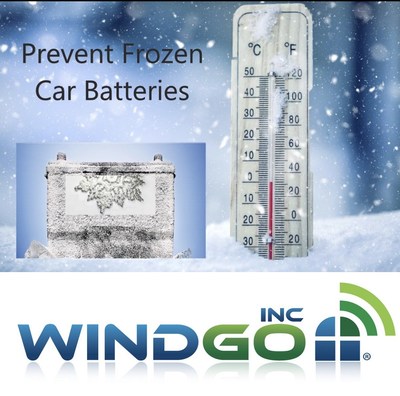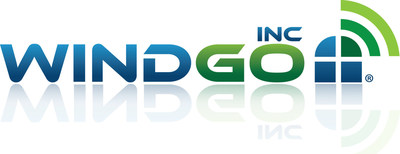WINDGO Granted Nano-Tech Vehicular Neurology Patent
23 April 2019
COLUMBIA, Mo., April 23, 2019 /PRNewswire/ -- WINDGO, Inc., a research and development company specializing in smart material and vibrational transfer technologies, announced today that they have been granted US Patent No. 10,266,139 for technology that is designed to proactively and interactively mitigate impact forces on a motor vehicle.

Automobiles and other vehicles surround us in our everyday lives. In the US, 33% of deaths among 13-19 year olds are caused by motor vehicle crashes. Many systems, such as airbags and seatbelts, are reactive and only deploy or activate after the incident has occurred. WINDGO's newest patent addresses systems in, on and around the motor vehicle that can make vehicles safer and potentially prevent life-threatening situations. Sensors monitoring the vehicle's environment (visual, audio, motion, pressure, etc.) can anticipate forces and provide a controlled response. This is accomplished through WINDGO's sensor coatings and layers which are tunable in response to external stimuli. Thousands of microminiature sensors identify incoming disruptions to the vehicle, then communicate with computing devices which determine the magnitude of the sensory data and ultimately activates external stimuli in the blink of an eye. The sensors may be embedded in vehicle bumpers, windows or even in the vehicle paint. While vehicle safety is paramount, the WINDGO technology also addresses noise cancellation and passenger comfort by reducing exterior noise and maintaining temperature control. This new technology is in line with WINDGO's emphasis on energy, resonance and vibration technologies and products.
Applications of this technology include vehicle and window impact damping, vehicle window defrosting and defogging, temperature and humidity monitoring and control and other vehicle-related vibration damping applications. WINDGO's vibration damping technology may be enabled through a device called ABSORBUD. Utilizing a coating or a film to quickly communicate the impact to other devices, the controlled response could shut off the engine or put the car in park after impact. The intercommunicating system will also collect real-time data of impacts that are reported to medical teams or vehicle manufacturers.
"This new technology will integrate the use of many existing vehicle sensors combined with our new material coatings and layers. The nanotechnology particles within these layers and coatings will add new functionality as sensors and communicating controlled-response nodes enhancing the functionality in the materials we use today," says VP of R&D, David Strumpf. "For example, one of the failure modes in a vehicle today is battery technology becoming too cold to operate efficiently or effectively. By adding intelligent coatings to a battery enclosure housing the newer lithium batteries can be vibrationally dampened as well as kept warm during peak freezing conditions. These hidden subsystem improvements will extend life to the vehicles and will ultimately add to interactive highway safety."
WINDGO, Inc. is focused on the IoT End-Node market expansion that is forecasted to exceed one trillion dollars by 2025. This new invention is based on technologies that evolved from the original works of inventor Fielding Staton. His invention of the ABSORBUD in 2013 has led to industry-changing advancements in macro, micro, and nano-based technologies.
WINDGO PDF - US Patents Public Press Copy- Freely Distributed and found on the WINDGO website.
Inventor:
Fielding Staton – Liberty, MO
David Strumpf – Columbia, MO
About WINDGO, Inc.
WINDGO, Inc. is a privately-held company based in Columbia, MO. WINDGO, Inc. has several patent holdings within its Intellectual Property holding company – Newtonoid, LLC which has been in the research and development business since 2013. Founded in 2016, WINDGO, Inc. has researched, developed, and produced a variety of smart products and other intelligent product subsystems in the sensory and digital markets including ABSORBUD, Smart Windows, Robot Skin Membranes, the ProVector™ Measurement Projection Mapping System, the Drone Chute™ Systems & Methods for Receiving Packages Delivered by Unmanned Vehicles and the Food Puck™ Assistive Cooking Device and Sensory System and the Shingle Clip System.

![]() View original content to download multimedia:http://www.prnewswire.com/news-releases/windgo-granted-nano-tech-vehicular-neurology-patent-300836741.html
View original content to download multimedia:http://www.prnewswire.com/news-releases/windgo-granted-nano-tech-vehicular-neurology-patent-300836741.html
SOURCE WINDGO, Inc.

